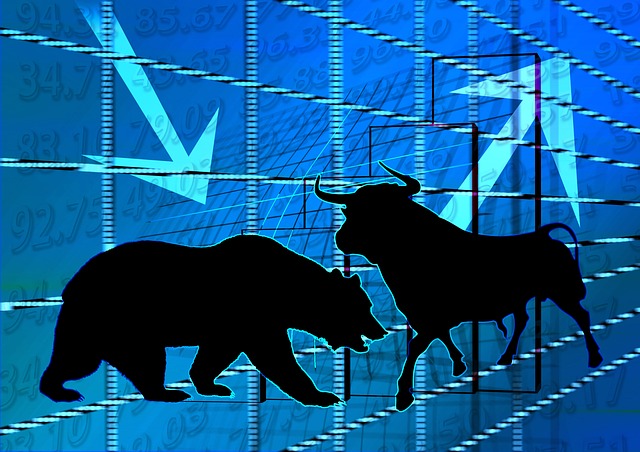The Dow plunged more than 900 points on Friday as Wall Street wrapped up a dismal April marked by investor handwringing over rising interest rates, relentless inflation, corporate earnings and global unrest.
The S&P 500 erased 9.1 percent in April, its worst month since March 2020. And it’s down 13.8 percent in 2022, its worst start to the year since World War II, according to an analysis by CFRA Research chief investment strategist Sam Stovall. Nasdaq slumped 13.5 percent in April, its worst month since the onset of the pandemic, while the Dow tumbled 5.3 percent.
And a bad April has the potential to spook economists and traders alike on the outlook for the rest of the year.
There are plenty of macroeconomic signs that worse could be in the offing. Tech companies were hit hard, with shares of Amazon, Apple and Google parent Alphabet all posting declines of 10 to 25 percent April.
Amazon, whose founder Jeff Bezos owns The Washington Post, lost 14% off its share price, $406 per share, alone on Friday.
The Federal Reserve appears poised to increase borrowing rates to between 3 and 3.25 percent, according to contracts tied to its rate-setting authority, aiming to stave off more inflationary pressure.
Inflation in March jumped to 8.5 percent, but the narrower core personal consumption expenditures price index, which excludes more volatile food and energy costs, showed signs of slowing.
Internationally, Russia on Thursday cut off fossil fuel exports to Poland and Bulgaria, scrambling energy prices. Brent crude oil traded Friday at $109 a barrel, and RBOB gas, the benchmark for American gasoline, sold for $3.46 per gallon.
Chinese health authorities have also instituted near total lockdowns in Beijing and Shanghai, the country’s two largest cities, to combat rising covid-19 case rates, throwing already stressed supply chains into disarray.
Altogether, the economy shrank during the three months of 2022 by 1.4 percent, fueling fears of a recession, defined as two consecutive quarters of economic decline.
“The markets finally faced up to economic and geopolitical reality: all is not well,” George Ball, chairman of Houston-based financial services firm Sanders Morris Harris, said.
“Markets are worried that the Federal Reserve is hiking interest rates into a slowdown, thus making a major, unforced policy error,” Jamie Cox, managing partner at Harris Financial Group, said. “In other words, events around the world are slowing economic growth, especially in Europe and Asia, with no clear signs of letting up. As the negative GDP print yesterday suggests, the fallout is here at home as well. So, instead of simply repricing the value of cash flows with the expected path of rates, markets are factoring in recession.”
But economists cheered other signs, even as investors sought safe havens. Corporate earnings have largely been positive. Meta, the parent company of Facebook and Instagram, reported user growth after sounding alarms in previous quarters that it was losing younger users to upstart video sharing platform TikTok.
Twitter’s stock surged 25.7 percent after mogul Elon Musk secured financing to purchase the company. His electric automaker, Tesla, lost 20 percent, though, forcing him to sell an extra $8.4 billion in shares to secure liquidity for his $44 billion Twitter acquisition.
Service and natural resources firms excelled during April. Proctor & Gamble gained nearly $8 per share, or 5.2 percent. Health insurance giant Humana grabbed better than $9 per share, or 2 percent. Tyson Foods, the Arkansas-based poultry producer, and Marathon Petroleum each added 4 percent and 2.4 percent, respectively.
“Manufacturing and service numbers look good,” said Louis Navellier, who heads an investment firm in Reno, Nev. “Consumer spending remains healthy. The only disruption is all the stuff we import from China due to the Shanghai lockdowns.”
On the consumer side, personal income grew by 0.5 percent in March, federal data showed, fueling a larger-than-expected boost in consumer spending. Walmart was a beneficiary, with shares up just more than 3 percent in April.
The Fed’s coming rate hikes, though worrisome for larger investors, has economists optimistic that workforce costs and inflation may soon level off.
“Consumers are the backbone of the economy and their spending continues at a normal rate despite everything the world has thrown at them in the first quarter this year from war in Europe to a stock market rout,” Chris Rupkey, chief economist at market research firm FWD Bonds, said in a Friday note. “There’s nothing about to go wrong with the economy with the consumer still cheerleading the way forward to prosperity. No recession on the horizon yet.”
Then Friday’s selloff happened. Rupkey revised his assessment in an after-close note.
“The stock market has collapsed, the most leading of leading indicators shows the economy is going to crash,” he said. “Look out below.”
Kate Rabinowitz and Doug MacMillan contributed to this report.

